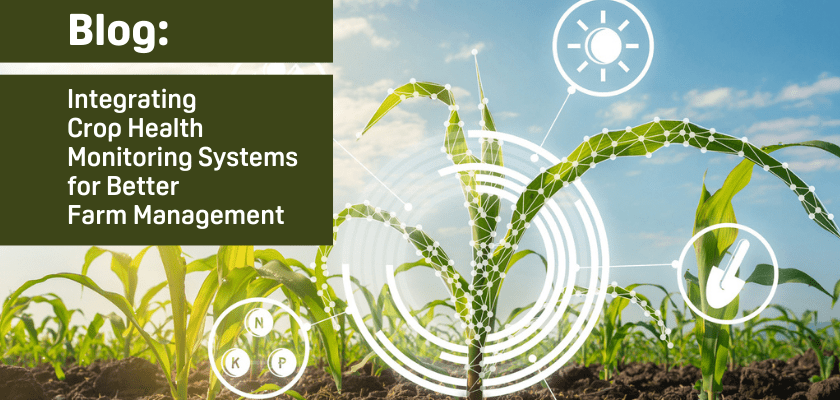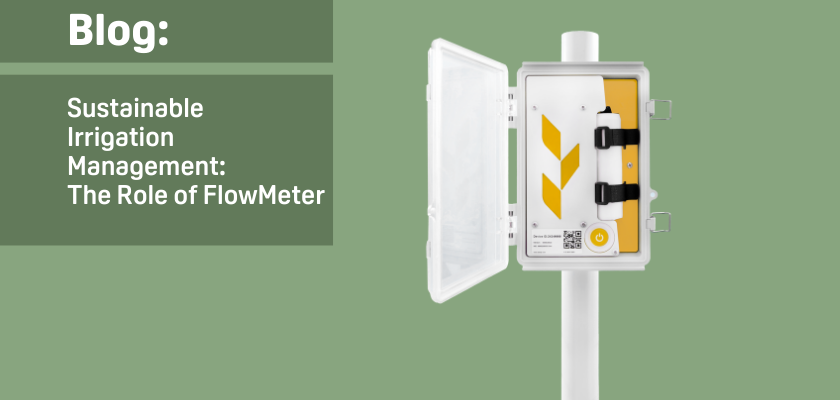

How Smart Agriculture is Revolutionizing Crop Management and Yield Optimization
Smart agriculture integrates technologies like IoT, AI, and big data to optimize crop management, increase yields, reduce resource waste, and enhance sustainability. Tools like Doktar’s Filiz and PestTrap provide real-time data, enabling farmers to make informed decisions, mitigate risks, and adopt more efficient, eco-friendly practices in modern farming.
Published on 08 October 2024
In recent years, smart agriculture has gained widespread recognition as a game-changer in the farming industry. By incorporating advanced technologies, such as the Internet of Things (IoT), big data, and AI-driven solutions, farmers can optimize crop management and significantly boost yields. This agricultural revolution concerns productivity, sustainability, efficiency, and precision agriculture. In this blog post, we will explore the impact of smart agriculture and how it is transforming modern farming practices.
What is a Smart Agriculture System?
A smart agriculture system integrates digital technologies into farming operations to enhance efficiency, productivity, and decision-making. This system utilizes various sensors, satellite imagery, IoT devices, and artificial intelligence (AI) to collect and analyze real-time data from the field. The goal is to provide actionable insights that enable farmers to make data-driven decisions about irrigation, fertilization, pest control, and harvesting.
For example, Doktar’s Filiz Agricultural Sensor Station plays a crucial role in a smart agriculture system by continuously monitoring soil conditions and weather parameters. This device collects real-time data on soil humidity, temperature, and moisture levels, helping farmers optimize irrigation schedules and reduce water waste. Farmers can access this data remotely through its app and receive timely alerts and recommendations.
What is the Purpose of a Smart Agriculture System?
The primary purpose of a smart agriculture system is to improve farming practices through the efficient use of technology. Smart agriculture solutions aim to:
- Increase Crop Yields: By analyzing real-time data, farmers can make more informed decisions about planting, watering, and fertilizing crops, leading to higher yields. For instance, CropMap, one of Doktar’s flagship products, helps farmers monitor crop health and track field boundaries using satellite imagery.
- Reduce Resource Waste: Water, fertilizers, and pesticides are among the most significant inputs in agriculture. By leveraging IoT devices like Filiz and PestTrap, farmers can use these inputs more effectively. Doktar’s Variable Rate Application (VRA) tool in Orbit further enhances resource management by applying different inputs based on specific field zones.
- Enhance Sustainability: Smart agriculture systems promote sustainable agriculture by reducing the overuse of water, fertilizers, and chemicals, which can harm the environment. Solutions like Orbit and CropMap monitor crop growth and provide recommendations to improve sustainability and reduce farming operations' carbon footprint.
- Mitigate Risks: Weather events, pests, and diseases are significant agricultural risks. Innovative agriculture technology enables farmers to receive early warnings about disease outbreaks, pest infestations, and adverse weather conditions. Doktar’s Plant Health Monitoring API integrates satellite data with real-time field conditions to alert farmers about potential risks.
What are the Advantages and Disadvantages of Smart Agriculture?
Advantages
- Precision Farming: One of the most significant advantages of smart agriculture is precision, which allows farmers to manage their fields more effectively. Technologies like VRA ensure that resources like water or fertilizers are applied precisely where needed, reducing input costs and minimizing environmental impact.
- Data-Driven Decision Making: Smart agriculture systems are powered by data, which empowers farmers to make informed decisions. From choosing the right time to plant to monitoring crop growth, data from IoT devices like Doktar’s Filiz sensor stations provide real-time insights that improve farm productivity and instill a sense of control and confidence.
- Increased Sustainability: Regenerative agriculture, which emphasizes soil health and biodiversity, benefits from using IoT technologies. Sensors and monitoring tools help maintain optimal conditions for the soil and plants, reducing the need for chemical interventions and ensuring long-term sustainability.
- Labor Efficiency: Automation and IoT tools relieve farmers from the burden of manual labor. For instance, PestTrap automatically monitors pest populations, minimizing the need for physical inspections while allowing farmers to manage pest control more effectively.
Disadvantages
- High Initial Costs: Implementing a smart agriculture system can be expensive. The costs of purchasing IoT devices, installing sensors, and integrating software systems can be a barrier for small-scale farmers. However, the potential for long-term benefits often outweighs the initial investment, instilling a sense of optimism and hope, particularly as the technology becomes more affordable.
- Technical Expertise: Adopting smart agriculture requires technical expertise to manage and interpret data from various devices. Farmers may need to learn how to use new technology platforms like Doktar’s Orbit and IoTrack apps, which could require time and resources. However, with Doktar’s 24/7 Expert Agronomist Support, you can easily acquire the necessary technical expertise.
- Connectivity Issues: Many smart agriculture devices require internet connectivity to function effectively. Farmers may need help implementing IoT solutions in rural areas with poor internet access, but Doktar’s devices are designed to work even in areas with limited connectivity.
How Do You Create a Smart Agriculture Project?
Creating a smart agriculture project involves several key steps:
- Assess Farm Needs: Identify the specific challenges you want to address. Are you looking to reduce water use, improve pest control, or increase crop yields? Knowing your objectives will guide your technology choices.
- Choose the Right Technologies: Once you have defined your goals, select the appropriate technologies for your farm. For instance, if you need real-time data on soil conditions, Doktar’s Filiz sensor stations are ideal solutions. PestTrap can provide accurate, automated pest monitoring if pest control is a primary concern.
- Integrate IoT and Data Analytics: Smart agriculture systems rely on data collection and analysis. Ensure that your project includes IoT devices and data analytics platforms to process the data collected from the field. Doktar’s CropMap and Orbit tools are excellent examples of how data analytics can optimize farming operations.
- Train Farm Workers: It is essential to provide training for your farm workers so they can effectively use the new technology. With Doktar’s user-friendly platforms, farmers can easily access data, receive alerts, and make informed decisions.
- Monitor and Adjust: Finally, continuously monitor the performance of your smart agriculture project. Analyze the data, adjust practices based on feedback, and refine your approach to achieve better results over time.
Conclusion
Smart agriculture is revolutionizing crop management and yield optimization. By integrating cutting-edge IoT solutions like Doktar’s Filiz, PestTrap, and CropMap, farmers can improve productivity, reduce input costs, and enhance sustainability. These smart technologies are driving a revolution in agriculture by transforming traditional farming practices into more efficient and data-driven operations.
As the world moves toward more sustainable farming practices, the adoption of smart agriculture systems is expected to increase, further reducing the environmental impact of farming. With IoT technology and real-time data analytics, farmers have the tools they need to thrive in the face of modern agricultural challenges. The future of agriculture is not only smarter but also more sustainable, thanks to the innovations brought about by smart agriculture.

Integrating Crop Health Monitoring Systems for Better Farm Management
Crop health monitoring systems revolutionize modern agriculture by enabling real-time insights into plant health, reducing losses, and promoting sustainability. Tools like Doktar’s CropMap and Orbit integrate advanced technologies, empowering farmers with data-driven decisions. By enhancing efficiency and sustainability, these systems are essential for future-proofing agricultural operations.

Modern Agriculture: Innovative Solutions to Combat Global Food Insecurity
Modern agriculture combats global food insecurity with precision agriculture, sustainable practices, and biotechnology. Tools like IoT, automation, and crop innovations optimize resource use, enhance resilience, and ensure stable food supplies. By integrating smart technologies, agribusinesses address challenges like climate change and resource scarcity, paving the way for a sustainable food future.

Sustainable Irrigation Management: The Role of FlowMeter
Flow meters transform irrigation by enabling precise water measurement, reducing waste, and optimizing crop yields. Tools like Doktar’s FlowMeter empower farmers to enhance water-use efficiency, conserve resources, and lower costs. By integrating flow meters into modern farming, agribusinesses achieve sustainable irrigation solutions, address environmental challenges, and ensure long-term agricultural resilience.
